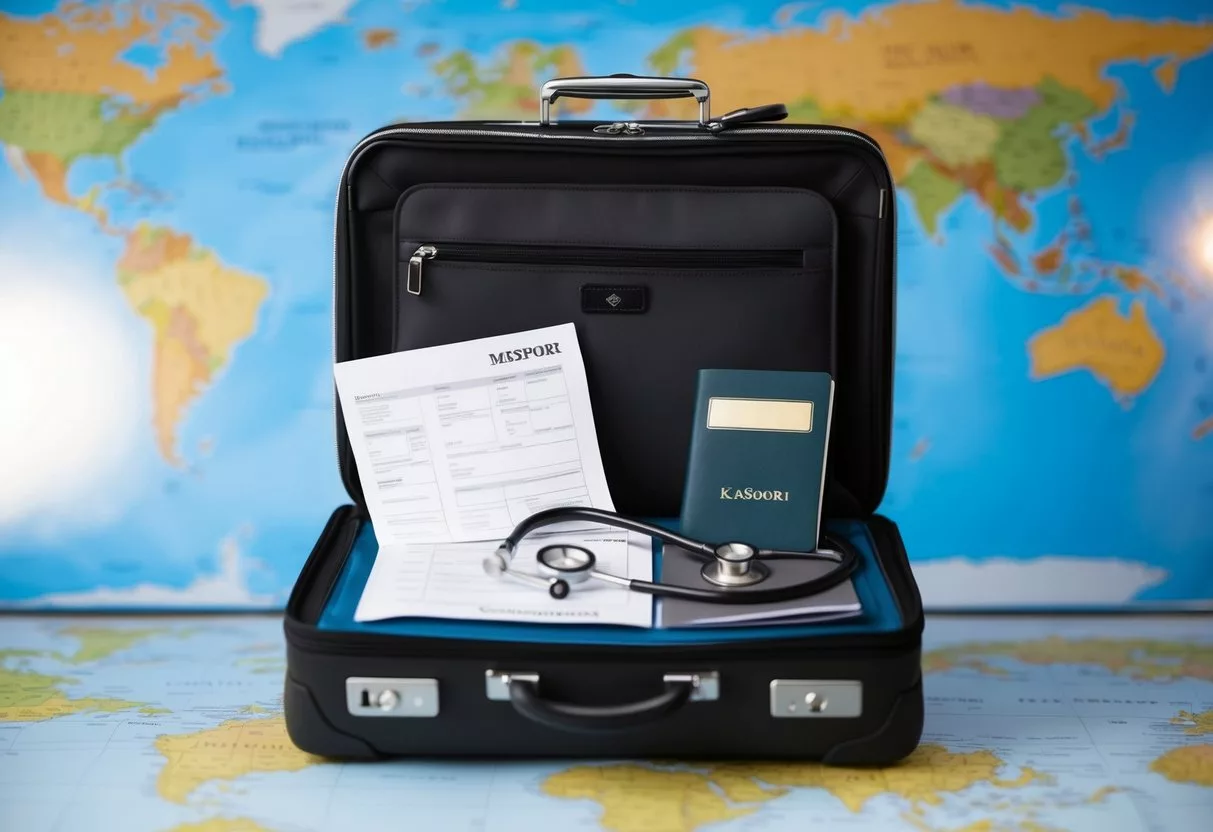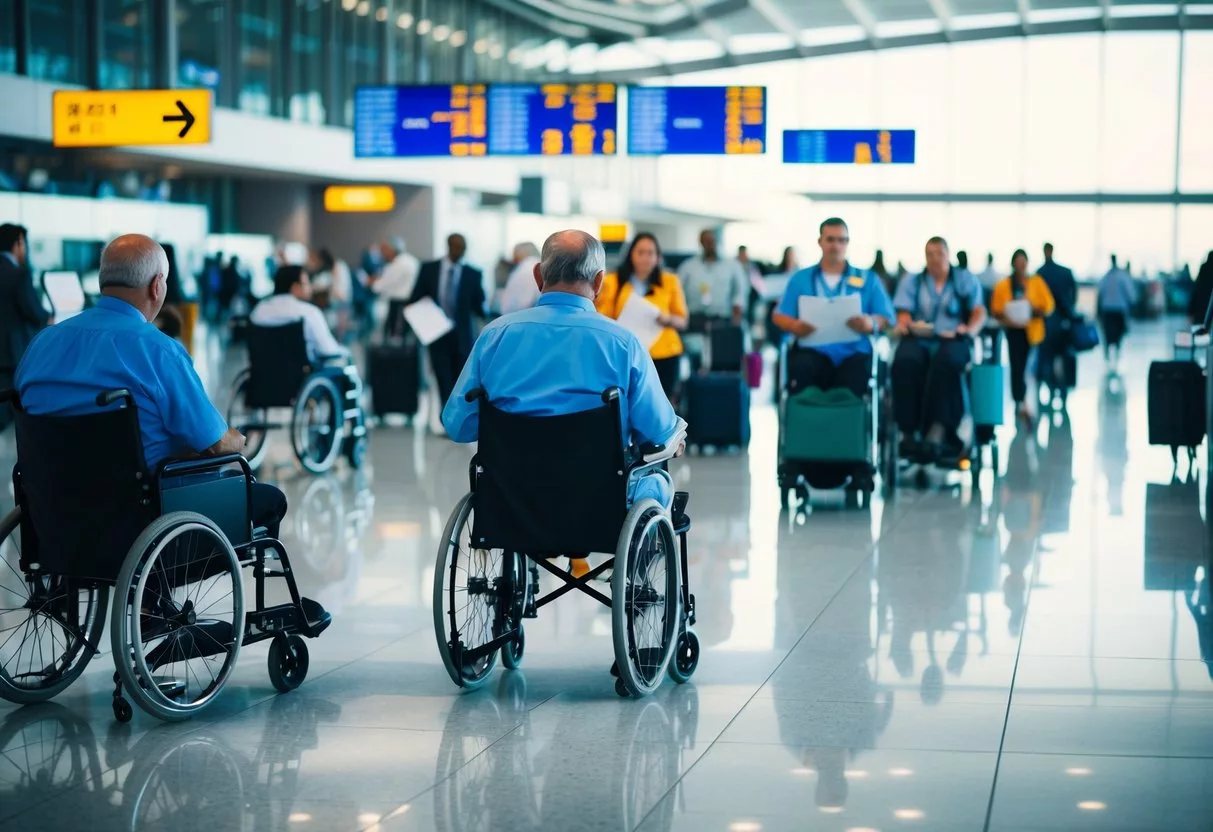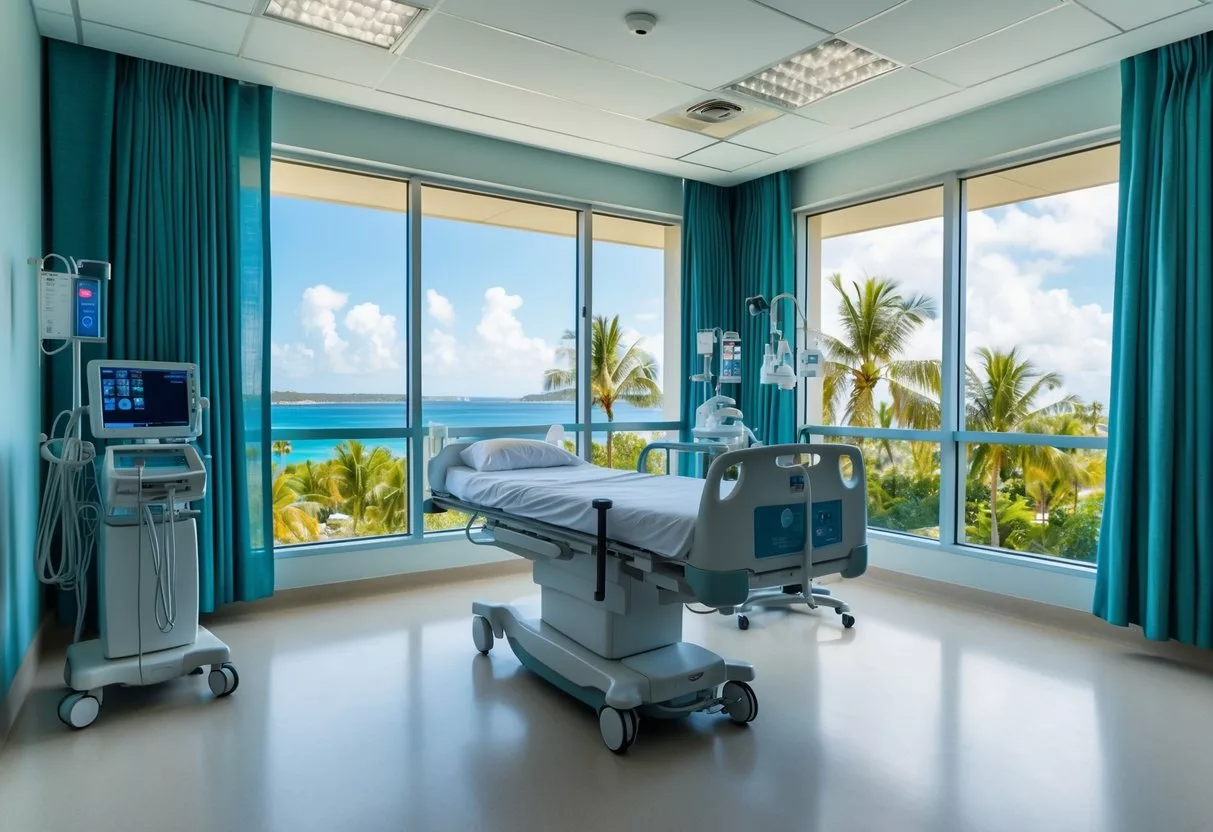Medical tourism is growing in popularity as people seek affordable healthcare options abroad. This practice involves traveling to another country for medical treatments or procedures. Patients often choose this route to save money or access treatments not available at home.

Medical tourists can find lower costs, alternative treatments, and even luxury care in various countries around the world. Popular destinations include Costa Rica, Singapore, Mexico, and Thailand. These countries offer a range of services from dental work to complex surgeries.
While medical tourism can provide benefits, it also comes with risks. Patients must consider factors like travel safety, language barriers, and follow-up care. It’s important to research thoroughly and consult with healthcare providers before deciding to pursue treatment abroad.
What Medical Tourism Involves?

Medical tourism involves traveling to other countries for healthcare services. It offers options for affordable treatments and shorter wait times. People seek various procedures abroad, from dental work to major surgeries.
Definition and Scope
Medical tourism refers to patients going overseas for medical care. It covers a wide range of health services. These include elective surgeries, complex procedures, and alternative treatments.
The scope of medical tourism is broad. It can involve:
- Cosmetic surgery
- Dental care
- Fertility treatments
- Cancer therapy
- Organ transplants
- Other services
People choose medical tourism for many reasons. Lower costs are a big draw. Some seek treatments not available at home. Others want to avoid long waiting lists.
History and Evolution
Medical tourism has ancient roots. People have long traveled for health reasons. In the past, this often meant visiting healing springs or sacred sites.
Modern medical tourism began in the 1980s. It grew as healthcare costs rose in developed countries. At the same time, many developing nations improved their medical facilities.
The internet boosted medical tourism. It made it easier to find information and book treatments. Today, many countries actively promote their healthcare services to foreign patients.
Popular destinations include:
- Thailand
- India
- Malaysia
- Mexico
- Costa Rica
These countries offer high-quality care at lower prices. They often have modern hospitals and skilled doctors.
Benefits of Medical Tourism

Medical tourism offers significant advantages for patients seeking healthcare abroad. It combines cost savings with access to cutting-edge treatments.
Cost-Effectiveness
Medical tourists can save between 25% to 90% on medical bills. The exact amount depends on the procedure and destination country.
Factors contributing to lower costs include:
- Cheaper diagnostic tests and medications
- Lower labor costs for medical staff
- Reduced overhead expenses for hospitals
Many countries offer package deals that bundle medical care with travel and accommodation. This can make the total cost even more affordable.
Access to Advanced Treatments
Medical tourism gives patients access to innovative therapies[1] that might not be available in their home country. Some benefits include:
- Cutting-edge medical technologies
- Experimental treatments not yet approved elsewhere
- Specialized procedures performed by world-renowned experts
Patients can seek care at top-rated international hospitals. These facilities often have state-of-the-art equipment and follow strict quality standards.
Medical tourists can also avoid long waiting times for certain procedures. This quick access can be crucial for time-sensitive treatments.
Popular Destinations for Medical Tourism

Medical tourism offers patients affordable, high-quality healthcare options in various countries. Top destinations provide specialized treatments, modern facilities, and experienced doctors.
Asia and the Pacific
Thailand stands out as a leading medical tourism hub. The country excels in cosmetic surgery, dentistry, and gender reassignment procedures. Patients enjoy world-class hospitals and skilled doctors at lower costs.
India attracts many for its affordable yet advanced medical care. The country specializes in cardiac surgeries, orthopedics, and fertility treatments. English-speaking staff and state-of-the-art facilities make it a popular choice.
Singapore boasts cutting-edge medical technology and highly trained professionals. It’s known for complex procedures like organ transplants and cancer treatments. The city-state ranks high for its quality healthcare facilities.
Europe and the Americas
Hungary is Europe’s dental tourism capital. Patients travel there for high-quality, low-cost dental work. The country also offers thermal spas for health and wellness treatments.
Mexico draws many U.S. patients due to its proximity and affordability. It’s popular for weight loss surgeries, dental care, and cosmetic procedures. Some Mexican hospitals have U.S. accreditation, ensuring quality care.
Costa Rica attracts medical tourists for its dentistry and orthopedic services. The country combines medical care with ecotourism, offering patients a chance to recover in a beautiful setting.
Medical Treatments Sought by Tourists

People travel abroad for a wide range of medical procedures. These include elective cosmetic surgeries and critical treatments for serious health conditions. Costs and availability often drive these medical journeys.
Elective and Cosmetic Procedures
Medical tourists frequently seek elective and cosmetic treatments. Popular choices include:
- Dental work (implants, veneers)
- Plastic surgery (facelifts, breast augmentation)
- Weight loss procedures
- Hair transplants
- Fertility treatments
Many choose these procedures abroad due to lower costs. For example, a facelift in Thailand might cost 60-70% less than in the U.S. Fertility treatments are another common reason for medical travel. Couples often find IVF and other reproductive technologies more affordable in countries like India or Czech Republic.
Critical and Life-Saving Treatments
Some patients travel for essential medical care. This includes:
- Cancer treatment
- Heart surgery
- Joint replacements
- Organ transplants
People may seek these treatments abroad for various reasons. Sometimes, the wait times in their home country are too long. Other times, certain treatments aren’t available where they live.
Cost is also a major factor. Complex procedures like heart bypasses can be much cheaper in countries like India or Malaysia. Quality of care is often comparable to developed nations, with many hospitals boasting international accreditations.
Insurance and Financial Considerations

Planning for medical tourism requires careful thought about costs and coverage. Key factors include health insurance policies and potential out-of-pocket expenses.
Health Insurance Coverage
Many standard health insurance plans don’t cover medical care abroad. Some insurers offer specialized medical tourism insurance for international treatments. These plans may include pre-travel consultations, the main procedure, and follow-up care.
Patients should check their existing policies carefully. Some plans might cover emergency care overseas but not planned procedures.
It’s important to ask insurers about: • Coverage limits for foreign medical care • Pre-approval requirements • Reimbursement processes for out-of-network care
Out-of-Pocket Expenses
Even with insurance, medical tourists often face significant out-of-pocket costs. These can include:
• Travel expenses (flights, hotels, meals) • Visa fees • Medical tests and consultations • Medication costs • Follow-up care upon return home
Medical tourism can offer cost savings[2] of 25% to 90% compared to treatment in the U.S. However, unexpected complications or extended stays can increase expenses rapidly.
Patients should budget for all potential costs. Setting aside extra funds for emergencies is wise. Some medical facilities offer package deals that include treatment, lodging, and transportation.
Choosing Healthcare Providers Abroad

When selecting medical care overseas, it’s crucial to check hospital accreditation and physician credentials. These factors ensure quality care and patient safety.
Hospital Accreditation
Accredited hospitals[3] often meet international standards for patient care and safety. Look for facilities with recognized accreditations like Joint Commission International (JCI) or Accreditation Canada International.
These accreditations show that hospitals follow strict guidelines for hygiene, staff training, and medical procedures. They also indicate that the facility has proper equipment and emergency protocols in place.
Check the hospital’s website or contact them directly to verify their accreditation status. Some countries have their own accreditation bodies, so research those as well.
Consider the hospital’s specialties and success rates for your specific procedure. Many international hospitals publish this information online or can provide it upon request.
Physician Credentials
Verifying a doctor’s qualifications is vital when seeking medical care abroad. Start by checking their education, training, and experience in the relevant field.
Look for board certifications or fellowships from respected medical organizations. Many international doctors train in the U.S. or Europe, which can be a positive sign.
Ask about the physician’s experience with your specific procedure. How many times have they performed it? What are their success rates?
Don’t hesitate to request a video consultation before committing. This allows you to assess the doctor’s communication skills and bedside manners.
Check online reviews and testimonials from previous patients. While not foolproof, these can offer insights into others’ experiences with the doctor.
Logistics of Medical Travel

Planning medical travel requires careful attention to travel arrangements, visas, and legal matters. These details can make or break a successful medical trip abroad.
Travel Arrangements and Accommodations
Booking flights and hotels is key for medical tourists. Many hospitals offer help with travel plans. Some even have deals with nearby hotels. It’s smart to book flexible tickets in case treatment dates change.
Look for hotels close to the medical facility. This cuts down on travel time and stress. Some hotels cater to medical tourists with special rooms or services.
Think about bringing a family member or friend for support. Plan their travel too. Don’t forget to pack all the medical records and documents needed.
Consider local transport options at your destination. Taxis, shuttles, or rental cars may be needed to get to and from treatments.
Medical Visas and Legalities
Most countries require a medical visa[4] for health-related travel. This is different from a tourist visa. Apply early, as the process can take time.
To get a medical visa, you’ll need:
- A letter from the foreign hospital
- Proof of funds for treatment
- A valid passport
- Travel insurance documents
Check if your home country allows the treatment you’re seeking abroad. Some procedures may be illegal at home.
Make sure your travel insurance covers medical care abroad. Regular policies often don’t include this. Consider buying special medical travel insurance for full protection.
The Impact on Global Healthcare

Medical tourism shapes healthcare standards and practices worldwide. It influences how care is delivered and raises concerns about spreading drug-resistant infections.
Standards of Care
Medical tourism pushes hospitals to improve their quality of care. Many facilities seek international accreditation to attract foreign patients. This leads to better equipment, training, and procedures.
Some countries have created special medical tourism zones. These zones often have higher standards than local hospitals. This can create a two-tiered system within countries.
Patient expectations also drive changes. Travelers demand high-quality care and modern amenities. This forces hospitals to upgrade their services and facilities.
Antimicrobial Resistance
Medical tourism may spread drug-resistant infections[5] across borders. Patients can pick up bacteria in one country and bring it home. This is a big worry for global health experts.
Different countries have different rules for using antibiotics. Some places use them more freely. This can create new drug-resistant strains.
Tracking infections across borders is hard. Patients may not tell their home doctors about overseas treatment. This makes it tough to spot new outbreaks quickly.
Hospitals in popular medical tourism spots may overuse antibiotics. They want to prevent infections in foreign patients. But this can make resistance worse.
Pre- and Post-Treatment Considerations

Planning for medical care abroad involves key steps before and after treatment. These steps help ensure a safe trip and smooth recovery.
Pre-travel Consultation
A pre-travel consultation is crucial for medical tourists. It helps identify potential health risks and prepare for the journey.
Patients should see their doctor at least 4-6 weeks before travel. This allows time for any needed vaccines or medications. The doctor can review medical history and current health status.
During the consultation, patients should discuss their planned procedure. The doctor can offer advice on managing existing health conditions[6] during travel and treatment.
Patients should also ask about:
- Required vaccinations
- Medication adjustments
- Potential travel-related health risks
- Any needed pre-procedure tests
Continuity of Care and Follow-Up
Continuity of care is vital for a successful medical tourism experience. It involves planning for care both during and after the trip.
Before leaving, patients should arrange follow-up care with their home doctor. They should obtain detailed medical records from the treatment facility abroad.
Key steps for continuity of care:
- Get a discharge summary from the overseas hospital
- Bring all medication lists and prescriptions home
- Schedule a follow-up appointment with the home doctor
- Arrange any needed rehabilitation or therapy
Patients should follow post-treatment instructions carefully. They should contact their doctor if they experience any complications or concerns.
Risks and Challenges

Medical tourism comes with several potential dangers and obstacles. Patients need to be aware of these issues before deciding to seek treatment abroad.
Medical Complications
Patients may face health risks[7] when getting care in other countries. Different medical standards can lead to problems. Some facilities might use outdated equipment or methods.
Infections are a major concern. Antibiotic-resistant bacteria may be more common in certain areas. This can make treating infections harder.
Travel after surgery raises the risk of blood clots. Long flights can be dangerous for patients who just had operations.
Follow-up care can be tricky. It’s hard to see the same doctor again after returning home. This makes it tough to deal with any issues that come up later.
Ethical and Legal Issues
Medical tourism can create ethical dilemmas. Some worry it takes resources away from local patients in the host country.
Legal protection may be limited when getting care abroad. If something goes wrong, it can be hard to sue or get compensation.
Travel health insurance[3] is crucial. Regular policies often don’t cover planned treatments in other countries.
Medical records can cause problems. Different countries have different privacy laws. It may be hard to get complete records sent back home.
Language barriers can lead to misunderstandings. This might result in incorrect treatments or dosages.
Future of Medical Tourism

Medical tourism is changing fast. New tech and virtual care are making treatments easier to get from anywhere. These changes will shape how people travel for health care in coming years.
Technological Advancements
Advanced technologies are transforming medical tourism. Artificial intelligence helps match patients with the best treatments abroad. Robots assist in complex surgeries, improving results.
Virtual reality lets patients tour facilities before traveling. Blockchain secures medical records across borders. 3D printing creates custom implants on-site.
Wearable devices track patient health before, during, and after trips. This data helps doctors provide better care. Smart hospitals use IoT sensors to monitor patients and equipment.
Telemedicine and Virtual Care
Telemedicine is changing how patients interact with doctors abroad. Video consultations let people talk to specialists without traveling. This saves time and money.
Remote monitoring tools let doctors check on patients after they return home. Apps help manage medications and recovery plans across time zones.
Virtual reality rehab programs guide patients through exercises at home. AI chatbots answer questions 24/7, reducing the need for in-person follow-ups.
Telemedicine also boosts wellness tourism. People can get health advice while on vacation without visiting a clinic.
Frequently Asked Questions

Medical tourism involves complex decisions about health, finances, and travel. Patients often have concerns about safety, quality, and logistics when considering treatment abroad.
What are the advantages and risks involved in medical tourism?
Medical tourism can offer significant cost savings on procedures. Patients may access treatments not available in their home country.
Risks include potential language barriers and cultural differences. Complications could arise during travel or after returning home.
Which countries are the most popular destinations for medical tourism?
Mexico, India, Costa Rica, Turkey, Singapore, Canada, and Thailand are top medical tourism destinations. These countries offer a mix of affordable care and high-quality facilities.
Mexico is popular among U.S. residents due to its proximity. Thailand attracts many for its combination of medical expertise and tourist appeal.
How do you ensure the quality of healthcare in medical tourism?
Research is key to ensuring quality care abroad. Look for hospitals with international accreditations like Joint Commission International.
Check the qualifications and experience of doctors. Read reviews from past patients to gauge satisfaction levels.
What legal considerations should one be aware of when engaging in medical tourism?
Understand that medical malpractice laws vary by country. Some nations may offer limited legal recourse for patients.
Check if your health insurance covers overseas treatment. Consider purchasing travel health insurance for added protection.
How do medical tourism companies facilitate the process for patients?
Medical tourism companies often coordinate care journeys. They may arrange travel, accommodation, and hospital appointments.
These companies can provide language support and help with paperwork. They often have relationships with specific hospitals and doctors.
What procedures and treatments are most commonly sought in medical tourism?
Dental work, cosmetic surgery, and orthopedic procedures are popular in medical tourism. Some seek cancer treatments or fertility services abroad.
Weight loss surgeries and heart procedures are also common. Stem cell therapies not approved in some countries draw patients to others.
References
- Medical, Health and Wellness Tourism Research—A Review of the Literature (1970–2020) and Research Agenda. https://www.ncbi.nlm.nih.gov/pmc/articles/PMC8536053/ Accessed October 25, 2025
- Medical tourism can offer cost savings. https://www.verywellhealth.com/understanding-medical-tourism-4069869 Accessed October 25, 2025
- Yellow Book | Yellow Book. https://wwwnc.cdc.gov/travel/yellowbook/2024/health-care-abroad/medical-tourism Accessed October 25, 2025
- What Is Medical Tourism? Traveling For Healthcare Explained. https://www.forbes.com/sites/nicoleroberts/2023/11/29/what-is-medical-tourism-traveling-for-healthcare-explained/ Accessed October 25, 2025
- The Globalization of Healthcare: Implications of Medical Tourism for the Infectious Disease Clinician. https://www.ncbi.nlm.nih.gov/pmc/articles/PMC7107947/ Accessed October 25, 2025
- Pre-travel consultation for cardiac patients: Planning your medical journey. https://www.medicaltourism.com/articles/pre-travel-consultation-for-cardiac-patients-planning-your-medical-journey Accessed October 25, 2025
- Medical Tourism: Travel to Another Country for Medical Care | Travelers' Health. https://wwwnc.cdc.gov/travel/page/medical-tourism Accessed October 25, 2025
